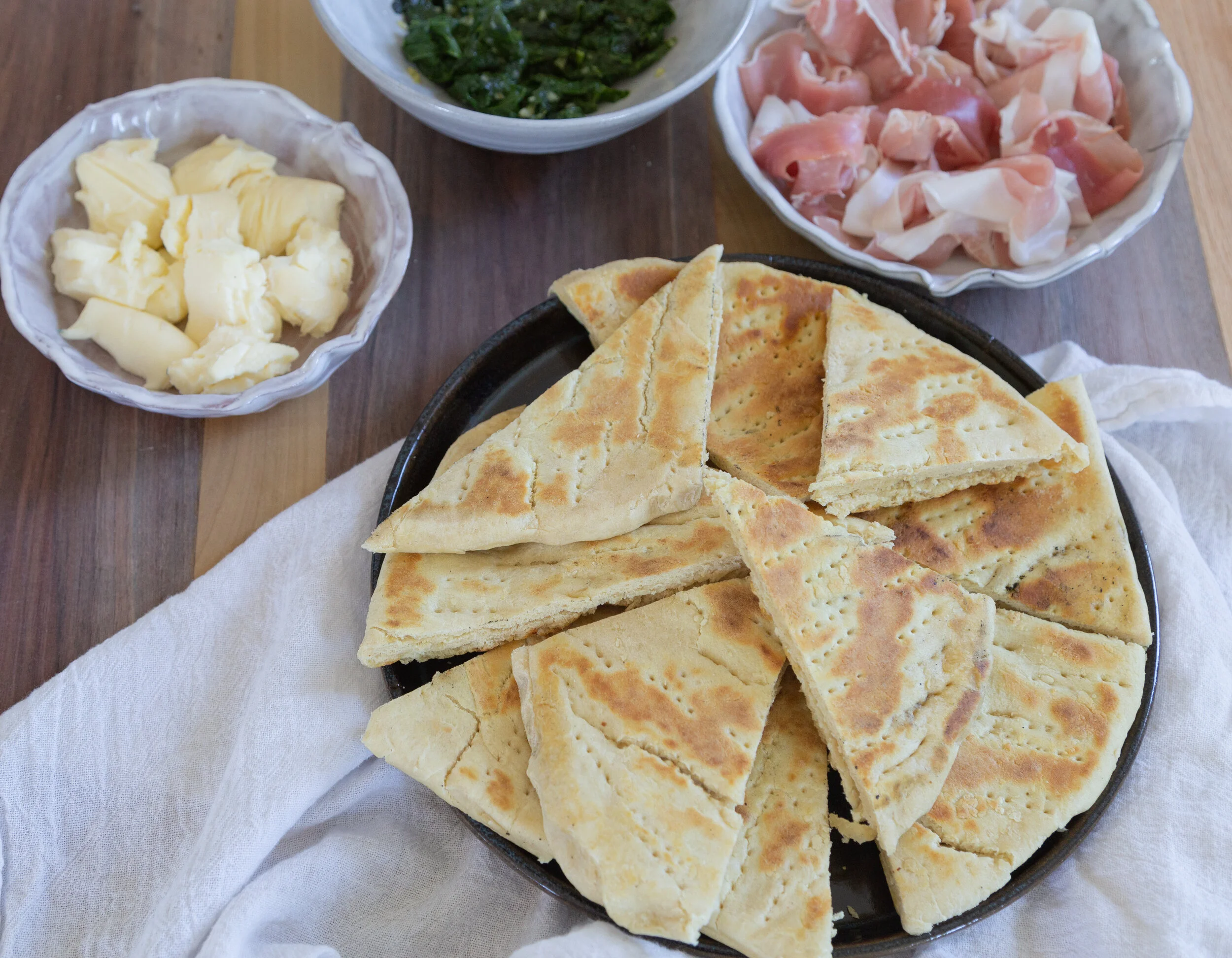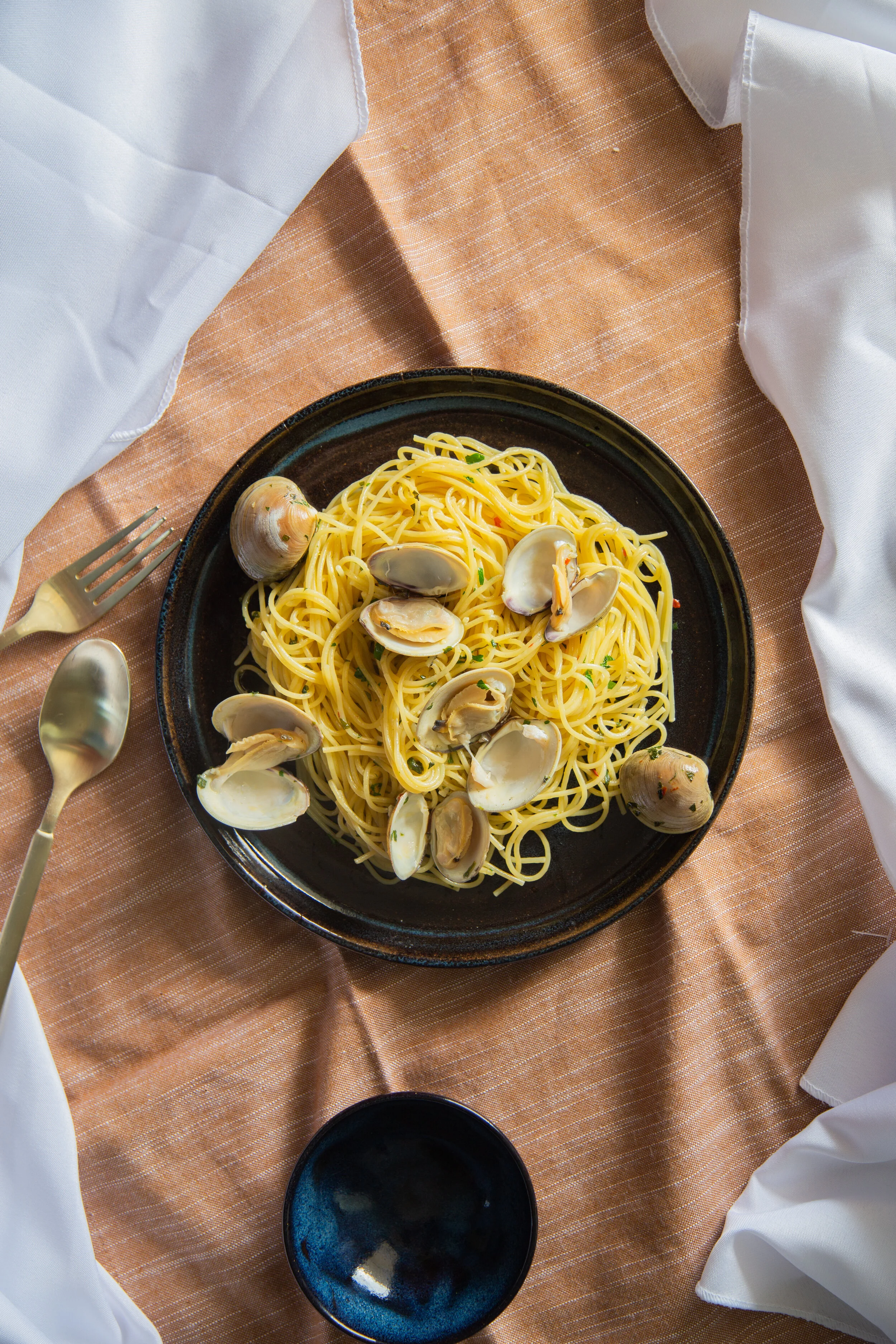The Legend Of Agnolotti Del Plin (& A Braised Shallot Adaptation)
Here’s something I need to fully confess to. I’ve become slightly (read much more than slightly) obsessed with making filled pasta. Almost every day I’m pinning new pasta shapes I want to try and following new pastaia and pastaio on Instagram. I now have a bucket list of pasta shapes I want to master and I’ve set aside hours of my weekends to practice making tortellini and cappelletti to perfection. I’ll say it, I have a new little passion in stuffed pasta, and I’m loving it. Enter Agnolotti Del Plin...
Hailing from Piedmont, the region of northern Italy that cuddles right up to France and Switzerland, Agnolotti Del Plin is a traditional, tiny stuffed pasta made with perfect little pinches holding their deliciousness together. Their teeny size are ideally smaller than a thumbnail (so cute!) and filled with anything from leftover meat, to veggies, to rice. Most industrious Italian home cooks will tell you, this filled pasta style serves a purpose. These adorable little pasta packages were originally created to use up any roasted meat leftovers that remained from other meals.
“Agnolotti” comes from the Piedmontese dialect “anulòt” - the term used for the tool used to make their ring-like shape. The hand-pinched closure of the little rectangular pasta dough is characteristic of the dish itself, as the gesture is called “plin” in Piedmontese too!
Variations & Adaptations of Agnolotti Del Plin
Shape aside, what’s inside of ones Agnolotti Del Plin changes from day to day, from family to family and village to village. Let’s get into some well-loved variations and adaptations!
In the many small villages of northern Italy, agnolotti are traditionally stuffed with donkey or mullet meat. In Valle d’Aosta, agnolotti are stuffed with fontina (remember my fonduta recipe made with these melty cheese?). In the highest regions of the Langhe, expensive veal and pork are substituted with rabbit.
The pasta can quite regularly be found cooked in a butter-based sauce, but many cooks prepare Agnolotti in beef broths and capon consommé around Christmas time to warm the body and soul. Some cooks love to coat their pasta in a simple pomodoro sauce, or coated with truffle.
The Legend of Agnolotti Del Plin
As with most beloved dishes in Italy, Agnolotti Del Plin has quite an origin story!
Agnolotti is said to have been create during a massive celebration after a Piedmontese castle was successfully defended against invasion. The castle’s cook, named Angeloto, knew he had quite the task! There were celebrations in order, but with little to no ingredients available (due to the fact that… you know, they narrowly avoided being overthrown, and perhaps were a bit more focused on defending the castle…) what was he to do?!
Quick witted Angeloto knew just what to do. He whipped up the meats he had available, roasted them, chopped and minced them and filled them in pasta. And ta-da! The world was introduced to Agnolotti Del Plin!
Centuries later, Agnolotti Del Plin is cooked in some of the best Italian trattorias with the same mindset… to use the abundant amounts of roasted meat leftovers.
Something I’ve pondered a lot about while learning about Italian food history is the vast difference in social rankings of the past. Agnolotti Del Plin highlights the two ends of the spectrum of Italian culture. Glorious feasts for dukes and duchesses, lords and kings… and peasants utilizing every last nub of food that’s available. It spans the spectrum of social ranking, and envelopes both ends with one common idea. Good food is good food. Period. No matter who makes it, or who it is served to. No matter if its to make the best of what’s around or to delight the senses. A delectable meal is undeniable.
Traditional Agnolotti Del Plin in Braised Shallot Sauce
After taking an amazing filled pasta class with Meryl of Pasta Social Club, I knew I wanted to share her INCREDIBLE braised shallot sauce with this recipe. Meryl is a complete legend in my eyes. I’ll be writing more about my cooking class with her in the future! The recipe I’m sharing today incorporates a more traditional meat filling with Meryl’s savory, rich, braised shallot cream sauce that I know you’ll love. Here we go!
Agnolotti Del Plin
Serves 4-5
FILLING
1 tbsp olive oil
1/3 pound beef loin, cut into 1-in cubes
1/3 pound pork loin, cut into 1-in cubes
1 small leek, sliced (use only the tender lower half)
1 cup roughly chopped green cabbage
1 clove garlic, minced
1 sprig rosemary
Salt and pepper, to taste
1/2 cup chicken broth
PASTA
300 grams '00' soft wheat flour or all-purpose flour
50 grams semolina flour
200 grams eggs (around 4)
BRAISED SHALLOT SAUCE
4 tablespoons butter
8 medium shallots, halved lengthwise & peeled
¾ cup dry vermouth
¾ cup chicken stock
1 large Grana Padano or Parmigiano Reggiano cheese rind
¼ cup heavy cream
2 sprigs of thyme
Salt & pepper
Region: Piedmont
Process:
FILLING
First - Your filling! Heat your olive oil in a medium pot. Add the diced beef, pork, leek, cabbage, garlic, rosemary, salt and pepper.
Once your veggies are softened, add your chicken broth and cover.
Let your meat mixture sauté for about an hour over low heat. After, remove from heat and drain the mixture.
Once cooled, transfer to a food processor and lightly pulse until mixture is ground together and can form a cohesive ball. Be careful not to over mix!
DOUGH
Pasta dough time! Make a volcano of your flour and create a large crater in the center. There, add your eggs and lightly whisk in your flour with a fork.
Once your mixture has gotten thicker, start tossing in your remaining flour bit by bit and form into a dough ball. Transfer onto a flat surface and kneed.
Work the dough for at least ten minutes, until the dough is glossy and “bounces back” when touched.
Allow your dough to rest, covered, for 30 minutes before rolling.
AGNOLOTTI
After the dough has rested, run it through a pasta machine and roll to a thinness of the #7-8 setting on the pasta machine, or to the thickness of paper.
Set the dough sheet on a flat, floured surface. You may need to cover your sheets of dough with a wet kitchen towel while working, to keep it from drying out.
Either pipe or shape small, hazelnut-sized balls of filling and place them one inch from the edge of the pasta sheet (close to your body) and also about one inch apart for the length of the sheet.
Lightly brush water along the pasta sheet one inch above the filling and on the sides.
Fold and roll the top inch of dough over the filling and press it against the water lightly to seal.
Trim off the excess pasta beyond the folded edge and remove.
Pinch the dough between the balls of meat filling to form a covered strand.
Slice between each piece from back (close to your body) to front. This will make your individual “plins”.
Set aside, covered until you’re ready to cook.
SAUCE
Preheat your oven to 325°F.
While your oven heats, trim the roots of your shallots and melt 2 tbsp of butter over medium-high heat in a Dutch oven.
Add your trimmed shallots cut-side down, with some salt. Allow these to get caramelized on the stove top.
Pour in your vermouth to deglaze the bottom of your dish. Scrape up any of those delicious brown bits and let simmer until reduced by half.
Once reduced, pour in the stock, cheese rind and a sprig or two of thyme.
Cover with foil and braise in the oven for 45 minutes.
When done, allow the shallots to cool completely and strain the liquid into a saucepan.
Strain the braising liquid into a saucepan and simmer over medium heat until thick. Add a dash or two extra of vermouth and stock if you think the sauce looks a little light. Let the vermouth reduce by half.
Stir in the heavy cream and simmer again until thickened.
ASSEMBLE
Cook the agnolotti in well-salted water for about 2 minutes, then pop them to the sauce.
Over low heat, add your remaining 2 tbsp of butter into the pasta and toss to combine. You can add a little pasta cooking water, if needed!
Serve immediately, topped with a generous dusting of grated Parmigiano Reggiano!

















